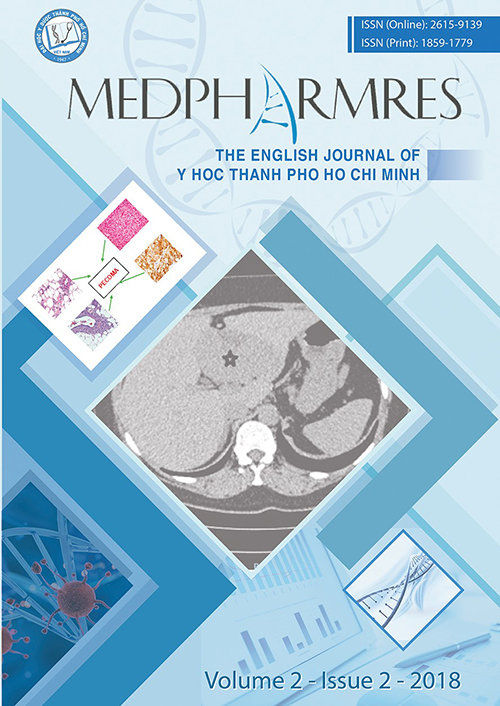Staphylococcus aureus nasal colonization among Vietnamese adults: prevalence, risk factors and antibiotic susceptibility profile
Tóm tắt
Staphylococcus aureus (S. aureus) has long been recognized as an important human pathogen causing many severe diseases. It is also a part of human normal flora with its ecological niche in the human anterior nares. This study focused on screening S. aureus nasal carriage in community and its relationship to human physiological and pathological factors which have not been studied in Vietnam previously. Two hundred and five volunteers in Ho Chi Minh City from 18 to 35 and over 59 years old both male and female participated in the study. Result showed that the prevalence of S. aureus nasal carriage in southern Vietnamese community was relatively low, only 11.2% (23/205), much lower than that in other international reports on human S. aureus. In addition, nasal carriage of the older age group (> 59 years old, 13.7%) was higher than that of younger age (18-35 years old, 10.4%). Other potential risk factors such as gender, career, height, weight, history of antibiotic usage, daily nasal wash, use of nasal medication sprays, acne problems, smoking and nasal problems showed no significant impact on S. aureus carriage. The obtained S. aureus nasal isolates were all sensitive to vancomycin. Lincomycin and tetracycline had low resistance rate with 4.3 % and 17.4 %, respectively. However, the isolates showed particularly high rate of multidrug resistance (54.2%) In summary, our data provided researchers an overview on S. aureus nasal carriage and antibiotic susceptibility profile of the community- isolated S. aureus in Vietnam. This would serve as valuable information on assessing risk of community-acquired S. aureus infections.

